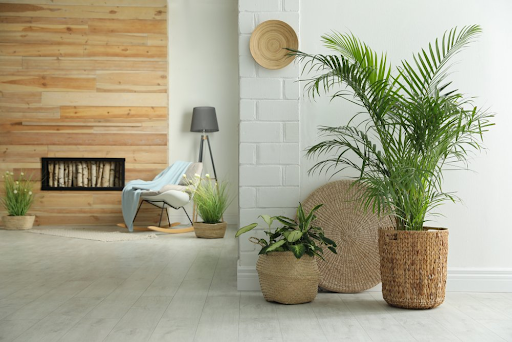The Ultimate Guide to Caring for Your Parlour Palm

Adding a touch of green to your indoor space not only enhances the aesthetics but also contributes to a healthier environment. Among the plethora of indoor plants available, Parlour Palm (Chamaedorea elegans) stands out as a popular choice for its elegance and ease of care. Originating from the rainforests of Southern Mexico and Guatemala, this compact palm species thrives indoors, bringing a tropical vibe to any room. Whether you’re a seasoned plant parent or a beginner, caring for a Parlour Palm is a rewarding experience. Here’s everything you need to know to keep your Parlour Palm healthy and vibrant.
Light
Parlour Palms prefer bright, indirect light. They can tolerate some degree of shade but thrive best in well-lit areas away from direct sunlight. Placing them near east or west-facing windows is ideal, as they’ll receive the gentle morning or evening light without the risk of scorching their delicate fronds.
Watering
One of the keys to keeping your Parlour Palm happy is to maintain the right moisture level in the soil. Overwatering can lead to root rot, while underwatering can cause the leaves to wilt and turn brown. Allow the top inch of the soil to dry out between waterings, then thoroughly water the plant, ensuring excess water drains away. During the winter months, when growth slows down, reduce watering frequency but don’t let the soil completely dry out.
Humidity
Parlour Palms thrive in humid environments, mimicking their natural habitat in the rainforest. To increase humidity levels, especially in dry indoor settings, you can place a humidity tray filled with water beneath the plant or use a humidifier. Misting the leaves occasionally can also help maintain adequate moisture levels.
Temperature
These tropical plants prefer temperatures between 65°F to 80°F (18°C to 27°C). Avoid exposing them to cold drafts or sudden temperature fluctuations, which can stress the plant and lead to leaf damage.
Soil
A well-draining, peat-based potting mix works best for Parlour Palms. Ensure the pot has drainage holes to prevent waterlogging, which can cause root rot. Repotting is typically done every couple of years or when the roots outgrow the current container.
Fertilisation
During the growing season in spring and summer, feed your Parlour Palm with a balanced liquid fertiliser every 4-6 weeks. Avoid over-fertilizing, as it can lead to salt buildup in the soil, causing damage to the roots.
Pruning
Remove any yellowing or brown fronds regularly to maintain the plant’s appearance and encourage healthy growth. Use clean, sharp scissors to make clean cuts near the base of the affected leaves.
Pests and Diseases
While Parlour Palms are relatively resistant to pests and diseases, occasional issues such as spider mites or scale insects may arise. Keep an eye out for any signs of infestation, such as webbing or sticky residue on the leaves, and treat promptly with insecticidal soap or neem oil.
Propagation
Propagating Parlour Palms is possible through division or by collecting and planting the seeds produced by mature plants. Division involves carefully separating the offshoots or “pups” from the parent plant and replanting them in separate containers.
In conclusion, caring for a Parlour Palm is a rewarding experience that adds a touch of tropical elegance to any indoor space. By providing the right balance of light, water, humidity, and temperature, you can ensure your plant thrives and remains healthy for years to come. Whether you’re a seasoned gardener or just starting out, Parlour Palms is an excellent choice for bringing a piece of the rainforest into your home. For a wide selection of indoor plants, including Parlour Palms, check out Australian Plants Online and embark on your journey to greener living. Maintaining a Parlour Palm doesn’t have to be complicated; with a little attention and care, you can enjoy its lush greenery and graceful foliage all year round.




